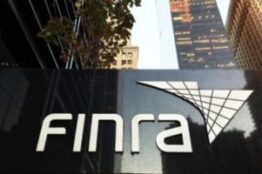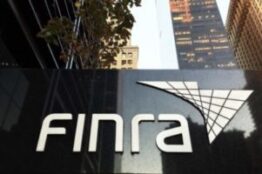
The annual report on enforcement actions to fight securities fraud released this month by the North American Securities Administrators Association, or NASAA, shows that actions pursued by state securities regulators increased by 51 percent in 2010 over the number of actions reported in the previous year.
The report also indicates that fraud and unregistered securities cases increased in 2010 over 2009. Compared to the 2009 survey, securities fraud violations were up 10 percent nationwide in 2010, unregistered securities violations were up 9 percent and unregistered firms and unregistered individual violations were up 24 percent.
Regarding registered members of the securities industry, the report shows that failure-to-supervise violations increased 32 percent over 2009. Roughly 200 suitability actions got started in 2010, as well as dozens of cases based on unauthorized trading, selling away, and churning.
The Function of the NASAA
Organized in 1919, NASAA is the oldest international organization devoted to investor protection. It is a voluntary association with a membership consisting of securities administrators in the 50 states, the District of Columbia, Puerto Rico, the U.S. Virgin Islands, Canada and Mexico.
The NASAA Survey & Report
The part of the 2011 NASAA report covered here is based on 2010 data on securities regulation enforcement in the United States. NASAA sent out its annual enforcement survey in the spring of 2011 and received 45 responses from members, an 88 percent response rate, which the report characterizes as a strong response that speaks to the accuracy of the data. In 2008 the response rate was 82 percent, and in 2008, the rate was 75 percent.
According to responses to the survey, state securities regulators conducted more than 7,000 investigations in 2010, the report says. About 3,500 of these investigations led to enforcement actions, including more than 1,100 criminal actions. As noted, this is a 51 percent increase over the total enforcement actions reported in the previous year’s survey.
Specifically, there were 3,475 enforcement actions that broke down as follows: 2,018 administrative actions; 324 civil actions, and 1,133 criminal actions, as shown in the report. In 2009, there were 2,294 enforcement actions that broke down into 1,604 administrative actions, 306 civil actions and only 384 criminal actions.
The states also reported almost 1,000 actions involving fraud and the abuse of senior citizens. The most common products involved in senior abuse cases, the report says, were unregistered securities in the form of promissory notes, private offerings or investment contacts. These outnumbered cases involving traditional securities five to one.
Affinity fraud was another trend in senior abuse cases. Variable annuities were the most commonly reported specific product, the report says. The states actually reported twice as many variable annuities cases in 2010 as they did in 2009. Three times as many senior abuse cases involving so-called “free lunch” investment seminars were reported for 2010 as compared to the previous year.
As with the other statistics in the report, this figure is bound to be conservative. The actual number of cases involving senior abuse is most likely much higher.
The overall number of enforcement actions increased substantially in 2010 despite the fact that the number of investigations fell slightly from 2009 to 2010. Investigations fell from 7,086 to 7,063, the report says. The survey questions did not gather any information as to why this might be so.
The survey asked the state regulators to include only formal investigations in their response, to distinguish them from the thousands of other efforts made to informally resolve complaints, referrals or other matter that fall into the enforcement category.
Large population states performed up to 800 investigations, the report says. More than 20 states said they conducted more than 100 investigations. The states also reported more than 600 referrals from law enforcement.
Of course, enforcement actions won’t do much good if there are no real consequences. These came in the form of state-levied fines or penalties in excess of $170 million, the report says. States also ordered more than $14 billion to be paid to investors in restitution. More than $12 billion, or 90 percent of that restitution, was paid out in 2010.
Much of the restitution came from repurchases of auction rate securities, the report says. The states also recovered or collected more than $31.2 million in costs or expenses.
Despite the much higher rate of enforcement actions in 2010, the previous year had a higher take of $245 million in fines and penalties. The amount of restitution was lower in 2009, however, hitting only $4.7 billion.
Consequences can also relate to a stockbroker’s license to do business. More than 2,595 licenses were withdrawn, and 647 more were denied, revoked, suspended or made conditional after state enforcement actions in 2010. In 2009, 3,353 licenses were withdrawn, and 531 were denied, revoked, suspended or made conditional.
State securities regulators also turned to the gravest consequence, meting out 1,134 years of jail time. Either the sentences were lighter or the prosecutions were less successful in 2010, however, because more years of incarceration came down in 2009, despite considerably fewer criminal actions. Bad actors were sentenced to a total of 1,786 years in 2009, though there were only 384 criminal actions. In 2008, slightly more than 1,000 criminal actions led to 1,330 years of incarceration.
The NASAA survey also included questions regarding the type of violations that triggered enforcement actions. During reporting period, more than 1,000 state enforcement actions involved fraud, usually involving material misrepresentations, false statements or a scheme designed to defraud or deceive an investor, the report says.
While some of the fraud cases involve registered brokers or investment advisers, most of them involved unregistered individuals selling unregistered securities. About 900 actions were reported that involved unregistered securities and more than 800 actions involved unregistered firms or individuals, the report says.
Specifically, two types of investments products were investigated far more than any other. One type was Rule 506 or Regulation D offerings. This rule and regulation are found within the Securities Exchange Act of 1934 and create a safe harbor for unregistered offerings provide they are made to no more than 35 U.S.-based investors, other than accredited investors. The latter are defined as institutional investors, insiders of the issuer, and people who meet high-net-worth standards.
The other type most often investigated was real estate investments or interests. More than 100 cases involving oil/gas investments or interests were also reported.
When it comes to broker-based products, structured products were the most often reported. These products that take something more traditional, say an investment-grade bond, and take the usual periodic payments and final principal payments, and replace them with payments that come from outside the issuer’s own cash flow. Often the payments on a structured product come from the performance of some underlying asset.
State regulators also reported dozens of cases involving variable or equity-indexed annuities, and 16 states reported a total of 68 actions involving hedge funds or private equity funds, the report says.
Most Problematic Products in 2010, in Order of Frequency
- Rule 506 offerings
- Real estate investment or interests
- Oil and gas interest
- Structured products
- Hedge funds or private equity funds
- Variable annuities
- Viaticals or life settlements
- Precious metal commodities
- Non-precious metal commodities
- Equity-indexed annuities
As noted above, fraud and unregistered securities violations appear to be on the rise. Compared to the data collected for 2009, securities fraud violations are up 10 percent across the country, unregistered securities violations are up 9 percent and unregistered firms and individuals violations are up 24 percent.
This is not to say that registered members of the securities industry are left unscathed. The report says that states initiated more than 350 cases involving dishonest or unethical activity by a licensed firm or individual. Dishonest or unethical behavior is the most commonly reported industry violation.
In addition, 225 failure-to-supervise violations were reported, a 32 percent increase over the amount reported in the 2009 survey. State regulators initiated almost 200 suitability actions, along with dozens of cases stemming from such violations as unauthorized trading, selling away, churning and books and records.
The majority of actions against individuals — 558 total — involved unregistered individuals, as compared to 264 actions against registered broker-dealer agents. The report notes that cases often involve multiple targets, and many cases involve both a firm and one or more agents or individuals, so there is some overlap in the numbers.
Unregistered firms were respondents in 355 actions, compared to 427 actions reported as being against registered broker-dealers. Registered investment adviser firms were involved in a total of 208 actions, and 146 actions were taken against investment adviser representatives, the report says.
Firms and individuals operating on the periphery of securities industry were also targeted in state enforcement efforts, the report says. Insurance agents or their firms were respondents in 143 enforcement actions in 20 states. Insurance agents are often registered as securities agents as well. Nine states reported actions against finders or solicitors, and seven states reported actions against persons who said they were financial planners.
The report notes that the data, statistics and trends serve to give a general overview of state enforcement efforts. The report does not include enforcement statistics from every state, so the data is necessarily conservative. Every state, even those who did not respond to the survey, has an enforcement program, so the actual overall numbers would be higher if every state responded.
The state regulators who responded to the NASAA survey are an important part of the regulatory scheme. In the United States, securities regulation by the states preceded federal securities laws, including the creation of the Securities and Exchange Commission, or SEC, and the Financial Industry Regulatory Authority, or FINRA.
NASAA helps its members coordinate enforcement efforts targeting multi-state frauds by helping the states share and use their resources more efficiently. NASAA’s Enforcement Section also acts as a contact for federal agencies and self-regulatory organizations, including the SEC, the FBI, the Postal Inspectors and FINRA. NASAA also helps to identify new trends in fraud.
Guiliano Law Group
The practice of Nicholas J. Guiliano, Esq., and The Guiliano Law Group, P.C., is limited to the representation of investors in claims for fraud in connection with the sale of securities, the sale or recommendation of excessively risky or unsuitable securities, breach of fiduciary duty, and the failure to supervise. We accept representation on a contingent fee basis, meaning there is no cost to unless we make a recovery for you, and there is never any charge for a consultation or an evaluation of your claim. For more information contact us at (877) SEC-ATTY.








